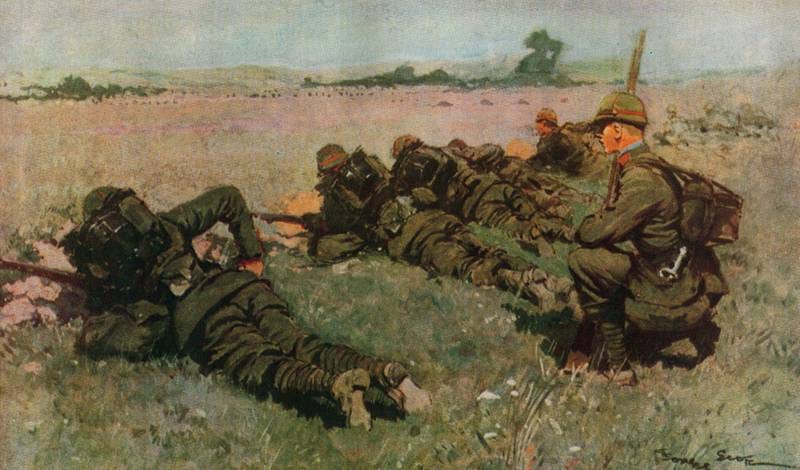In the summer of 1911, the well-known magazine illustrator Georges Scott painted a picture of a group of French infantrymen wearing an experimental uniform. Known as the tenue réséda, this new manner of dress replaced baggy red trousers with a combination of tailored knee pants and puttees, baggy blue overcoats with short jackets, and red képis with cloth-covered leather helmets that might be described as “Pickelhauben sans Pickel.” The color of all of these items was a shade of grayish green reminiscent of the reseda plant, whence the name of the ensemble.
More comfortable than the blousy clothing that French foot soldiers had worn for nearly a century, the experimental uniform also facilitated the sort of tactical discretion made necessary by the weapons of the day. Unfortunately, the tenue réséda encountered considerable resistance in many influential corners of French society. Some observers noted that it resembled the field gray uniforms that German soldiers had begun to wear the previous year. Others complained that, in sharp contrast to the traditional tricolor togs of the Infantry of the Line, the tenue réséda lacked any features that were unmistakably French. (The most famous of the latter set of critics, Eugène Étienne, made a speech in the Chamber of Deputies in which he proclaimed that the red trousers “had something of the national about them.”)*
Thanks to widespread opposition, the tenue réséda passed into the realm of lost opportunities, and so the French infantry of 1914 took to the field dressed for the wrong sort of war.
*Though his endorsement of the old uniforms is often quoted as “red trousers are France” (le pantalon rouge c’est la France), Étienne is more likely to have said “trousers dyed in madder have something of the national about them” (“le pantalon garance a quelque chose de la nationale.”)





